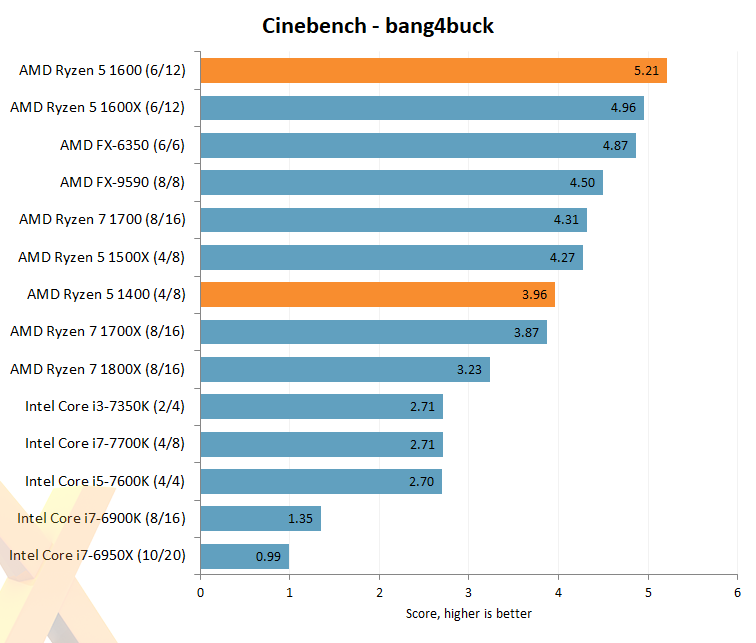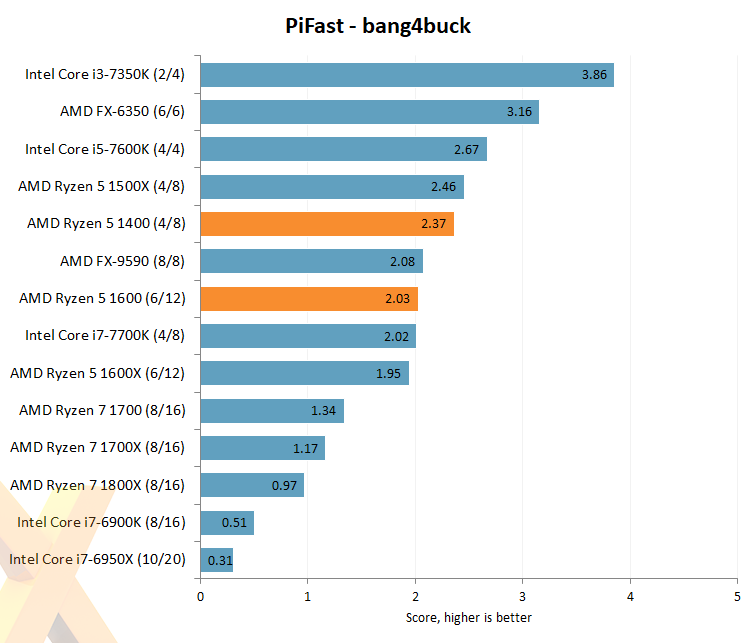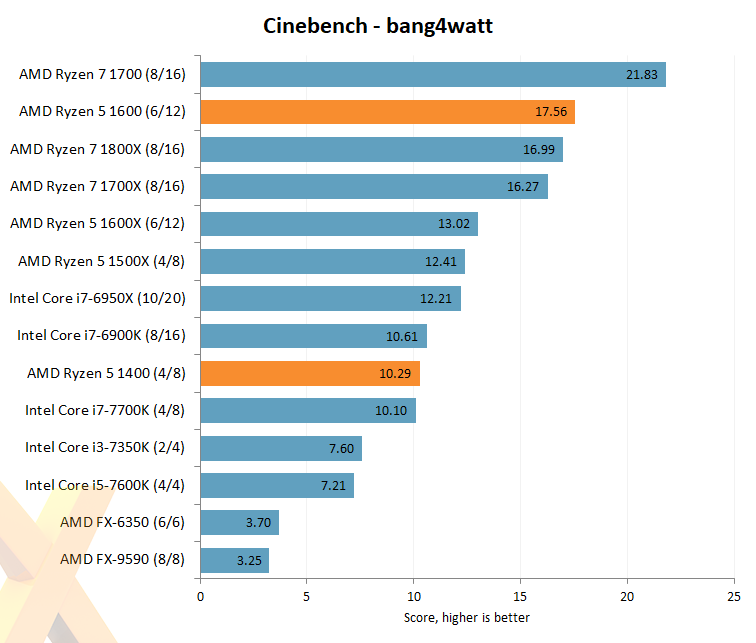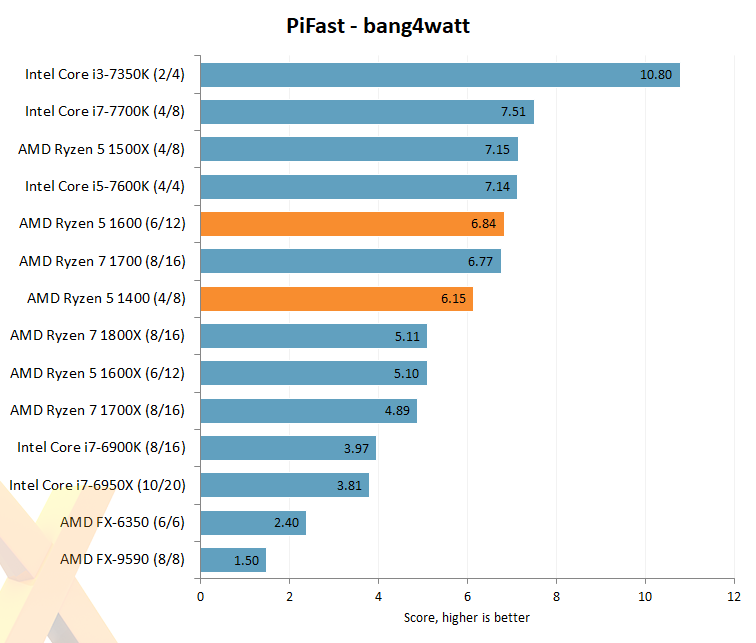HEXUS Bang4Buck and Bang4Watt




Understanding how the performance stacks up against other Ryzen chips and Intel's latest offerings is straightforward enough; we have readily commented upon the Ryzen 5's really solid multi-core performance and adequate single-thread speed.
What is more enlightening is how these new chips shake out once value is put into the equation, thus bringing the HEXUS bang4buck back from the ashes.
We have taken both single- and multi-threaded applications in the form of PiFast and Cinebench and then calculated how our 14 chips line up once price, taken from official lists, is factored in. The cheaper processors do better in PiFast because they don't have a surfeit of threads while Cinebench's love of multi-core goodness plays well for AMD in particular - the company takes all the top spots.
There are variables to consider here. You cannot have a chip that has excellent single- and multi-threaded performance whilst being inexpensive: something has to give.
We can also graph up single- and multi-threaded relative performance with the TDP factored in, hence a bang4watt for both PiFast and Cinebench. This is important if you are using a small, thermally-restricted chassis and want the best punch for the watt.
We have a new Cinebench bang4buck champion in the form of the Ryzen 5 1600. Its excellent, 1,000-mark-plus score comes at a cost of 'just' $219 - a price that Intel cannot touch. The Ryzen 5 1400 is cheaper, granted, but it loses out on cores and threads and therefore doesn't look so attractive.
Again, excellent performance in Cinebench means the 65W Ryzen 5 1600 is a great bet for those who can really push systems, while both new chips produce decent-enough results in PiFast.









